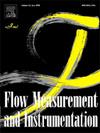基于多场耦合的先导式电液比例换向阀的仿真分析与优化
IF 2.3
3区 工程技术
Q2 ENGINEERING, MECHANICAL
引用次数: 0
摘要
先导式电液比例换向阀广泛应用于复杂和精密工程领域。其工作稳定性和可靠性决定了液压系统的整体性能。先导式电液比例换向阀在工作过程中,由于受到压力和温度的影响,阀芯会产生变形,从而导致夹紧或卡滞等问题。为解决这一问题,本研究采用流固热耦合仿真方法,分析了不同结构节流槽的阀芯流场特性和热变形情况,并对 U 型节流槽结构进行了优化。结果表明,随着阀门开度的增大,节流槽前段成为阀芯径向变形最大的主要区域。本文以阀芯的稳态流力为测量标准,确定了结构参数的约束范围,并将径向热变形纳入结构尺寸的优化分析中。结果表明,优化后的流量特性比优化前提高了约 32%,考虑热变形后的最大稳态流量力比优化前降低了约 4N。这为先导电液比例换向阀的结构设计和优化提供了重要的设计依据和参考。本文章由计算机程序翻译,如有差异,请以英文原文为准。
Simulation analysis and optimization of pilot type electro-hydraulic proportional directional valve based on multi field coupling
The pilot-operated electro-hydraulic proportional directional valve is widely used in complex and precision engineering fields. Its operational stability and reliability determine the overall performance of the hydraulic system. During the working process of the pilot-operated electro-hydraulic proportional directional valve, the spool is deformed due to the influence of pressure and temperature, resulting in problems such as clamping or stagnation. In order to solve this problem, this study uses the fluid-solid-thermal coupling simulation method to analyze the flow field characteristics and thermal deformation of the spool with different structural throttling grooves, and optimizes the U-shaped throttling groove structure. The results indicate that as the valve opening increases, the front section of the throttling groove becomes the primary region where the maximum radial deformation of the spool occurs. In this paper, the steady-state flow force of the valve core is taken as the measurement standard, the constraint range of the structural parameters is determined, and the radial thermal deformation is included in the optimization analysis of the structural size. It's verified that the optimized flow characteristics are improved by about 32 % compared with that before optimization, and the maximum steady-state flow force after considering thermal deformation is reduced by about 4N compared with that before optimization. This provides an important design basis and reference for the structural design and optimization of the pilot electro-hydraulic proportional directional valve.
求助全文
通过发布文献求助,成功后即可免费获取论文全文。
去求助
来源期刊

Flow Measurement and Instrumentation
工程技术-工程:机械
CiteScore
4.30
自引率
13.60%
发文量
123
审稿时长
6 months
期刊介绍:
Flow Measurement and Instrumentation is dedicated to disseminating the latest research results on all aspects of flow measurement, in both closed conduits and open channels. The design of flow measurement systems involves a wide variety of multidisciplinary activities including modelling the flow sensor, the fluid flow and the sensor/fluid interactions through the use of computation techniques; the development of advanced transducer systems and their associated signal processing and the laboratory and field assessment of the overall system under ideal and disturbed conditions.
FMI is the essential forum for critical information exchange, and contributions are particularly encouraged in the following areas of interest:
Modelling: the application of mathematical and computational modelling to the interaction of fluid dynamics with flowmeters, including flowmeter behaviour, improved flowmeter design and installation problems. Application of CAD/CAE techniques to flowmeter modelling are eligible.
Design and development: the detailed design of the flowmeter head and/or signal processing aspects of novel flowmeters. Emphasis is given to papers identifying new sensor configurations, multisensor flow measurement systems, non-intrusive flow metering techniques and the application of microelectronic techniques in smart or intelligent systems.
Calibration techniques: including descriptions of new or existing calibration facilities and techniques, calibration data from different flowmeter types, and calibration intercomparison data from different laboratories.
Installation effect data: dealing with the effects of non-ideal flow conditions on flowmeters. Papers combining a theoretical understanding of flowmeter behaviour with experimental work are particularly welcome.
 求助内容:
求助内容: 应助结果提醒方式:
应助结果提醒方式:


